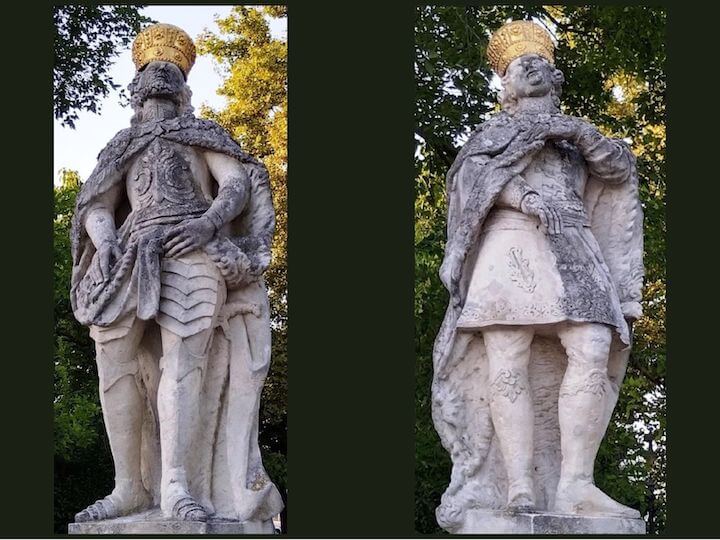
Halálának évfordulóján Vámbéry Árminra emlékezünk
Vámbéry Ármin, a XIX. század egyik legismertebb magyar tudósa, Kelet-kutató 1832. márciusában, feltehetőleg 19-én született a felvidéki Szentgyörgyön, izraelita családba, Wamberger Hermann néven, amelyet később a ma ismert alakra magyarosított. Budapesten hunyt el 1913. szeptember 15-én.
Gazok, hitványok – és győztesek Egy 877 éve megvívott csata emlékére
1146. szeptember 11-én a Lajta és a Fischa folyó közén II. Géza király nagy létszámú serege megütközött II. („Jasomirgott”) Henrik bajor herceg és osztrák őrgróf (1156-tól osztrák herceg) fegyvereseivel.


Egy kevéssé ismert Szent László-ábrázolás
A közelmúltban levonult drávai árhullám talán kissé távoli asszociációval fölidézheti bennünk ennek a közepes európai folyónak a magyar történelemhez kötődését, pontosabban ennek a kötődésnek az eredetét.
A Kárpát-medence szkíta kora és annak keleti kapcsolatai Párducz Mihály kutatásaiban
115 évvel ezelőtt, 1908. szeptember 11-én, a vajdasági Fehértemplom községben született Párducz Mihály, a XX. századi magyarországi vaskori kutatás egyik legelismertebb szakembere.


„A természet törvénye tilt minden hazugságot”
1723. szeptember 11-én született Érsekújvárott Pray György, jezsuita történetíró, aki a történeti irodalomban oly gazdag 18. századból azzal magaslik ki, hogy ő volt az első magyar történész, aki munkásságát következetesen a források kritikai vizsgálatára alapozta, és gyakorlatilag ettől fogva beszélhetünk modern magyar történettudományról.
Trónomlás Dömösön, halál a patak partján 960 éve hunyt el I. Béla király
„Eltemették pedig Szent Megváltó monostorában, amelyet ő építtetett azon a helyen, amelyet Szekszárdnak hívnak. Ez a Béla ugyanis kopasz volt és barna bőrű, ezért saját monostorát saját külsejéről Szekszárdnak nevezte el.”


Pápai Páriz Ferencre emlékezünk
Háromszázhét éve ezen a napon hunyt el Pápai Páriz Ferenc tudós, polihisztor, a magyar orvostudomány nagy alakja. Sokoldalúságára jellemző, hogy legtöbben mégis szótáríróként gondolnak rá.
„Az basáknak Egör alá szállása”
Eger ostromának kezdete 1552. szeptember 9-én.


Vértezettel és anélkül
Nagykanizsa főterének északi részén találjuk a fölirata szerint Theophilus Boheim alkotta Szentháromság-szobrot, amelyet eredetileg 1773-ban állítottak föl.
Zrínyi IV. Miklós kirohanásának emlékezete a közoktatásban
Közel egy hónapon át védte Zrínyi IV. Miklós Szigetvárt 1566-ban, az I. Nagy Szulejmán szultán által vezetett oszmán sereggel szemben, végül maradék csapataival a belső várba szorult. Ekkor a vár feladása helyett katonái élén szeptember 7-én kitört és hősi halált halt.
